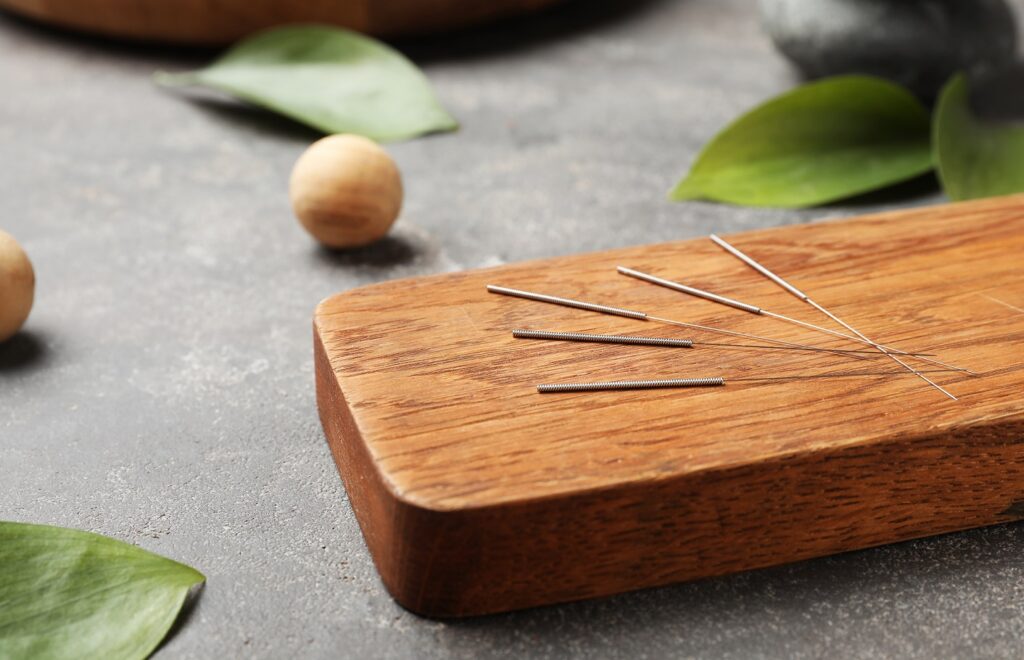What is Dry Needling?
Dry Needling is a modern, science-based treatment for the whole family designed to ease muscular pain and stiffness.
Dry Needling – or otherwise known as Medical Acupuncture – is a form of therapy in which fine needles are inserted into myofascial trigger points (painful knots in muscles) in order to stimulate a healing response in painful musculoskeletal conditions.
Practitioners use sterile, single-use, fine filament needles (acupuncture needles) that don’t inject fluid into the body, hence the term “Dry” Needling is used.
What is a Myofascial Trigger Point?
 Myofascial trigger points are sensitive spots within a muscle that can be tender to touch. They commonly develop with injury, excessive exercise, lack of exercise, poor posture and stress.
Myofascial trigger points are sensitive spots within a muscle that can be tender to touch. They commonly develop with injury, excessive exercise, lack of exercise, poor posture and stress.
A myofascial trigger point is characterised by the development of a sensitive nodule in the muscle, also known as a ‘knot in the muscle’.
When contracted or directly compressed, it elicits local tenderness and referred pain which usually responds with a pain pattern distant to the spot.
The muscle is unable to stretch normally, obtain a good blood supply containing oxygen and nutrients, or flush out additional waste products.
The presence of a myofascial trigger point in a muscle can lead to pain in the area and loss of movement in a joint.
When is Dry Needling used?
Dry Needling is used alongside other therapies to alleviate the symptoms of many conditions, including:
• Neck pain
• Shoulder and arm pain, Rotator Cuff problems
• Tennis elbow, Golfer’s elbow
• Hip and leg pain
• Foot and ankle sprain, including plantar fasciitis
• Headaches that originate from the neck (cervicogenic)
• Chronic fatigue
• Repetitive strain injuries (RSI)
• Acute sport injuries
• Acute muscle spasm
Dry Needling is one of many techniques that can be utilised by your osteopath to assist with your rehabilitation. Dry Needling is often used in combination with other techniques including massage, articulations, manipulations, stretching and exercise prescription.
What is the Difference Between Dry Needling and Acupuncture?
 Dry Needling is not the same as acupuncture, although there are similarities between the two techniques. The primary difference between Dry Needling and acupuncture is the theory behind why the techniques work.
Dry Needling is not the same as acupuncture, although there are similarities between the two techniques. The primary difference between Dry Needling and acupuncture is the theory behind why the techniques work.
Dry Needling is primarily focused on the reduction of pain and restoration of function through the release of myofascial trigger points in muscle. Acupuncture treats for the purpose of altering and restoring the flow of energy (Qi) through key points in the body (traditional Chinese meridians) to restore balance.
One practice has been used for thousands of years as an alternative treatment and has some solid research of effectiveness. Dry Needling has only been adopted in the last couple of decades and further research is needed.
How safe is Dry Needling?
Many patients have come to love this treatment as it gives them relief, but the use of needles can be intimidating to some. If the patient is apprehensive about needling, Nonica prefers to use other therapeutic techniques instead, like soft-tissue massage and stretching.
Dry Needling is very safe when performed by experienced and highly trained osteopaths, physiotherapists or chiropractors. While the side effects from dry needling are usually minor, patients can experience:
• Bruising at the dry needling site
• Fatigue or lack of energy
• Soreness
These mild side effects usually resolve within 24-48 hours.
It is best to avoid exercise or strenuous activity right after treatment, especially with the muscles that have been needled. Continue with your normal physical activity. Use ice for soreness.